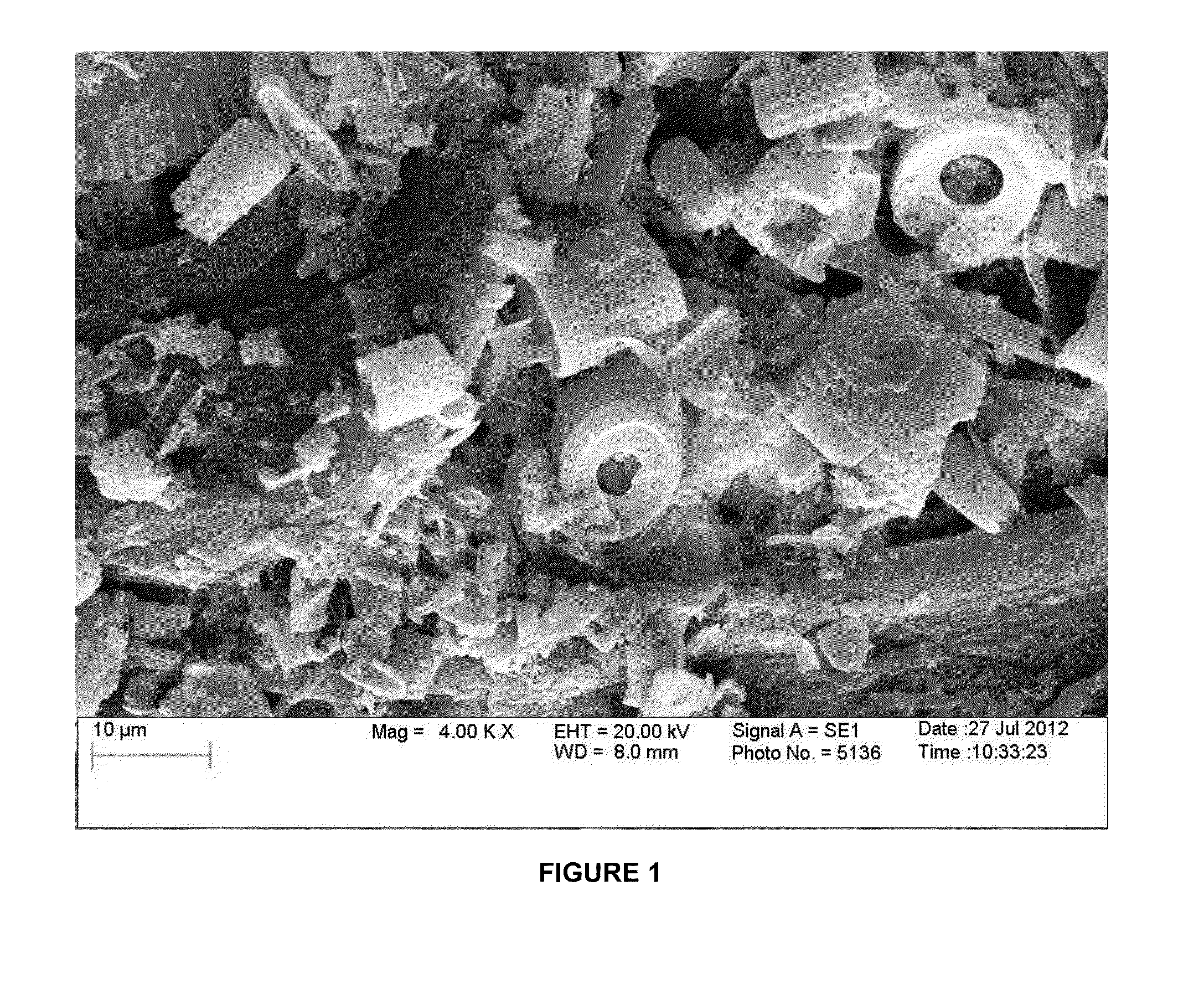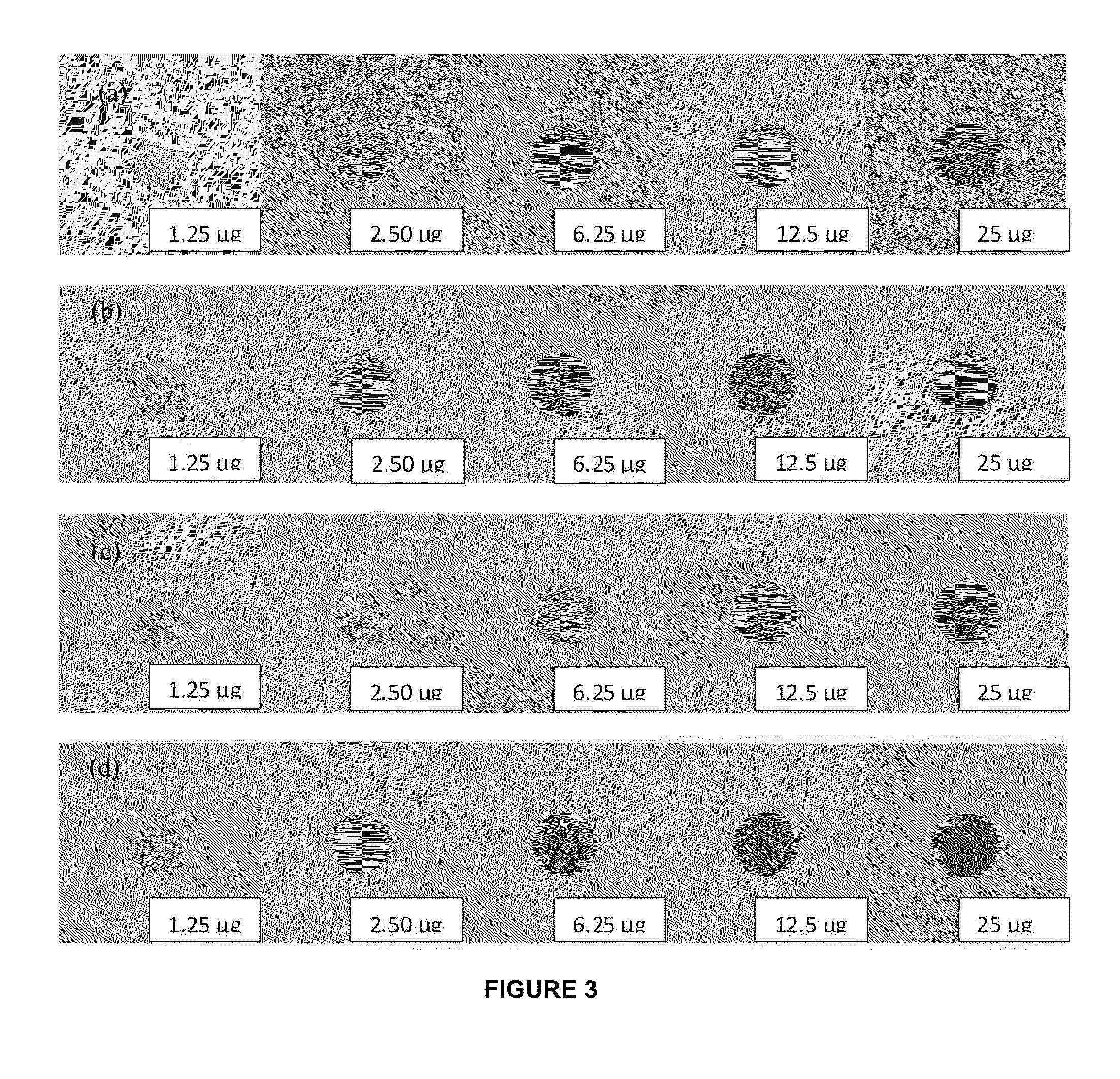Self-assembled nanostructured sensors and methods thereof
- Summary
- Abstract
- Description
- Claims
- Application Information
AI Technical Summary
Benefits of technology
Problems solved by technology
Method used
Image
Examples
example 2
Application of Self-Assembled Nanostructured Compositions to Articles
[0382]Other methods of applying the nanostructured diatom sensor compositions to paper are contemplated. Paper can be produced in handsheet molds. Rosin size and alum can be added into the papermaking furnish to acidify the paper and to reduce the migration of coating components into the paper. A slurry of diatoms can be prepared by dispersing the diatoms in water. In addition, an amount of binder (e.g., polyvinyl alcohol (PVOH) or latex binders such as high glass transition temperature latex binders) can be prepared. Cationic additives such as Poly-DADMAC, polyvinylamine, and polyethylenemine can be used to enhance the fixation and stability of the dye into the diatoms. Wet strength of the paper surface can be enhanced by additives such as glyoxal modified polyacrylamide or polyamide epichlorohydrine. If a meaningful level of dye leaching is found, ion pairing of the dyes with a quaternary ammonium salt such as ce...
example 3
Self-Assembled Nanostructured Compositions Identify Food Spoilage by Detecting Ammonia Gas
[0388]The nanostructured diatom sensor compositions of the present disclosure can be applied to various articles and be utilized for detection of gases, bacteria, explosive degradation products, and / or neurotoxins. In this example, the nanostructured diatom sensor compositions were applied to paper and evaluated for identification of food spoilage by detecting ammonia gas. The application to paper was as described in Example 2.
[0389]The paper-based diatom sensors with different coating formulations were first evaluated at various levels of volatile ammonia. Four different coating formulations were applied to the paper-based diatom sensors in the various tubes: (a) the coating formulation was applied at 6 g / m2 coat weight and contained 0.5 parts of dye; (b) the coating formulation was applied at 20 g / m2 coat weight and contained 0.5 parts of dye; (c) the coating formulation was applied at 6 g / m2...
example 4
Additional Food Spoilage Identification Using Self-Assembled Nanostructured Compositions
[0393]Additional experiments of other fish and poultry spoilage using the nanostructured diatom sensors can be performed. For example, experiments can be done at selected temperatures with cold storage (4° C.) and temperature-abused display conditions (9° C.). Meat samples for microbiological analyses can be prepared by mixing 10 g of meat product in 90 ml of 0.85% phosphate buffered saline (PBS, pH 7.2). A tenfold serial dilutions of each sample (in duplicate) can then be prepared in PBS and 0.1 mL of serially diluted samples can be plated onto pseudomonas plate. After 2 days of growth at 26° C., the total viable colonies can be counted and recorded to correlate with the sensor response.
[0394]Since the surface of meat is the most vulnerable to contaminated with bacteria, detection and enumeration of bacterial contamination on the surface area by a swab test can be performed to investigate and de...
PUM
 Login to View More
Login to View More Abstract
Description
Claims
Application Information
 Login to View More
Login to View More - R&D
- Intellectual Property
- Life Sciences
- Materials
- Tech Scout
- Unparalleled Data Quality
- Higher Quality Content
- 60% Fewer Hallucinations
Browse by: Latest US Patents, China's latest patents, Technical Efficacy Thesaurus, Application Domain, Technology Topic, Popular Technical Reports.
© 2025 PatSnap. All rights reserved.Legal|Privacy policy|Modern Slavery Act Transparency Statement|Sitemap|About US| Contact US: help@patsnap.com



